Background | Itinerary | Travel Planner
“The world has few secrets left … Bhutan is one of them.”
— Katie Hickman, Dreams of the Peaceful Dragon – A Journey into Bhutan
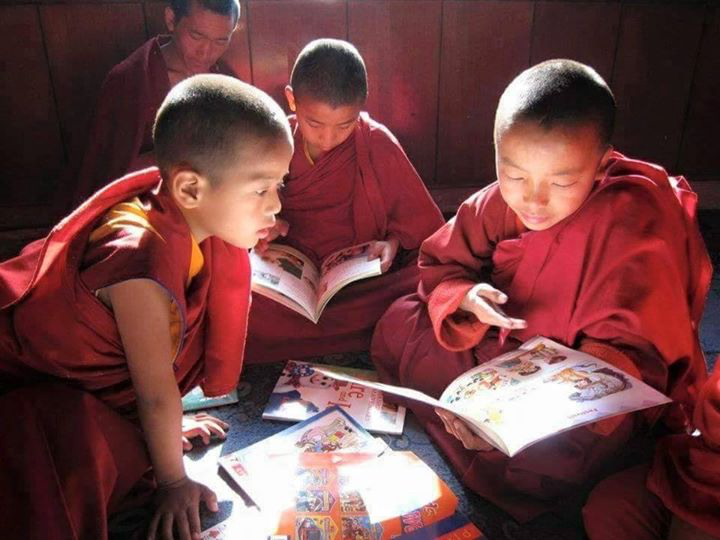
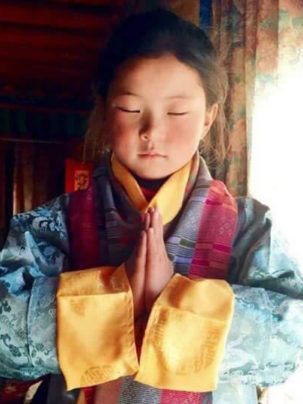
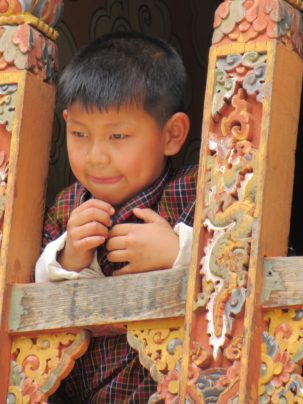
“All travel is a sacred journey to self-discovery and a spiritual practice.”
— Joseph Dispenza, The Way of the Traveler
14-Day Bhutan Cultural Immersion Itinerary
Pilgrimage in the sacred land of Guru Rinpoche
including profound teachings in sacred sites.
“Cultivating Emotional Balance With The World On Fire”
and “Opening Doors to the Mysteries of the Heart”
October 6-19, 2024
This itinerary provides a rural immersion into remote, undiscovered, and rarely visited Eastern Bhutan, Land of The Thunder Dragon. Throughout the pilgrimage, we will be visiting 8th and 14th Century temples, holy sites, and small hamlet villages, windows into Bhutan’s rich cultural heritage.
Perfect for naturalists, trekkers, birders, botanists, pilgrims, art historians, Buddhists, meditators, textile enthusiasts, and adventurers at heart. Prayers will be a part of our activities conducted with sacredness and spirituality.
Abundance of orchids and monkeys, Barking Deer, elusive Red Pandas, Snow Leopards, Himalayan Red Fox, Assamese Macaws and countless unusual birds in pristine forests, medicinal plants, Rhododendron forests, mangoes, hazelnuts, pomegranates and regional chili peppers, featured along with eastern Bhutanese farmers’ and weavers’ hospitality, and the serenity of the natural beauty cradling us.
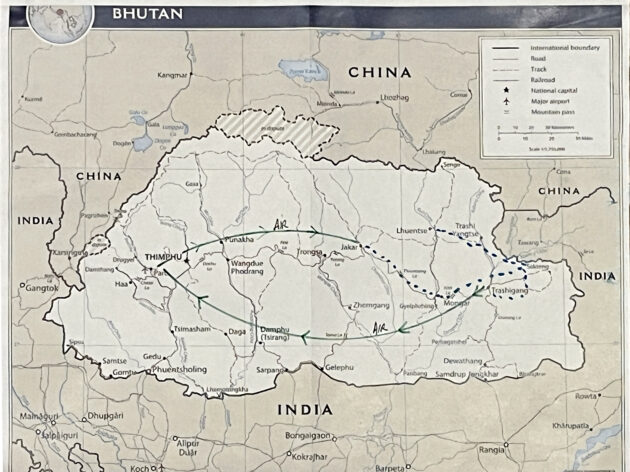
In the Footsteps of Venerable Dilgo Khyentse, Vajrayana Master
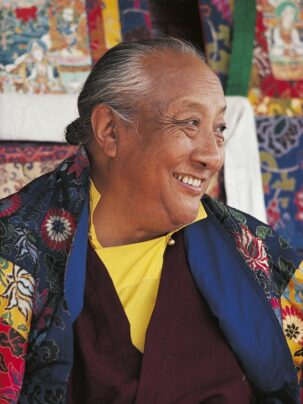
Venerable Dilgo Khyentse, Vajrayana Master.
Our Pilgrimage will bear witness to the writings, the life and teachings of His Holiness Dilgo Khyentse Rinpoche who lived mostly in Paro, while in Bhutan. We will immerse in the house by the Kichu Monastery, donated to him by the Queen Mother, which was his residence and is now a sacred museum remaining as he left it in 1991, and dedicated to His Holiness. Many personal, ceremonial and ritual articles are on display.
His Holiness also established a nunnery at Sississing, between Paro and Thimphu, called Shechen Orgyen Chodzong. Every visit to Bhutan includes our visiting the nunnery and having time with some of the 150 nuns who are thriving there. This is always a heartfelt immersion.
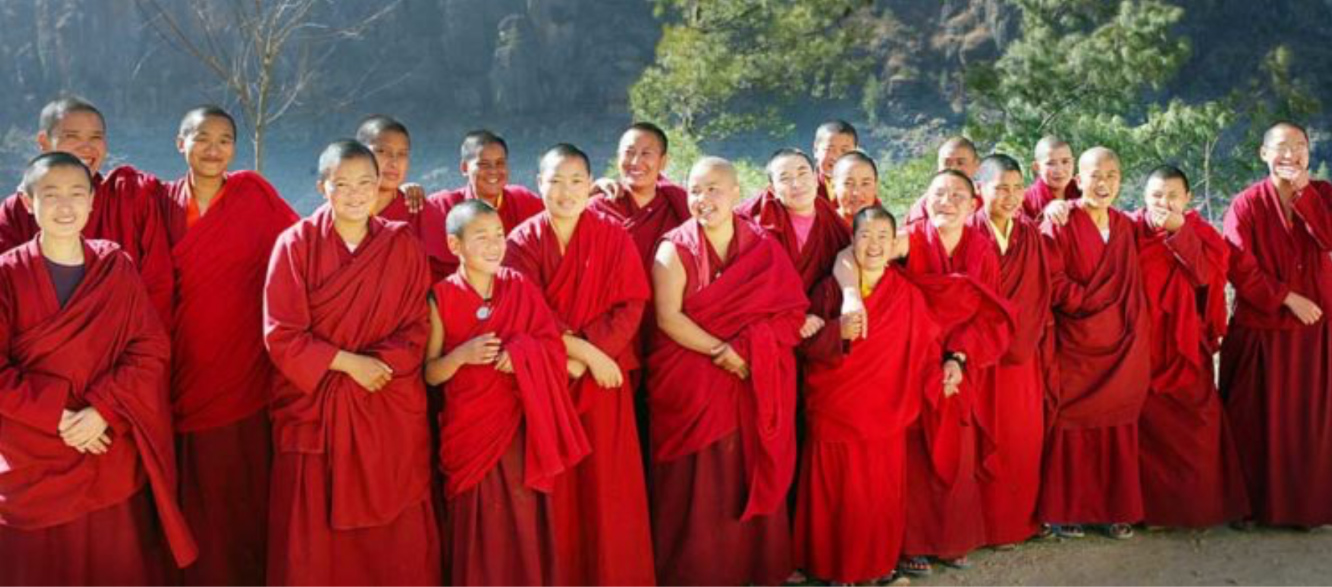
Shechen Orgyen Chogzong Nunnery
In his later years, His Holiness moved his residence near Satsham Chorten, on the way to Taktshang (Tiger’s Nest) monastery. This is also where his last rites were held.
A memorial stupa is built on the spot where his cremation ceremonies were held. A temple dedicated to Vajrakilaya is now the principal temple where some 30 monks live on a permanent basis. We will be visiting and praying at the sacred memorial site where Venerable Khyentse’s skull and other relics as well as relics of many lamas are kept. We will be privileged to have a private viewing and we will organize a teaching and have prayers and meditation at this very sacred place.
Kichu Monastery is one of the most sacred temples in Bhutan and one of our destinations. The legend is that 108 temples were built over various parts of the body of a demon to subdue it and spread the teachings of the Buddha. While most of the temples were in Tibet, two are in Bhutan – Kichu in Paro and Jampa Lhakhang in Bumthang, where we will have time for meditation, prayers, and reflection.
His Holiness conducted annual weeklong Vajra Kilaya Drubchen prayers and also gave many teachings and empowerments at Kichu monastery.
His Holiness, Venerable Dilgo Khyentse Rinpoche also guided the construction of a monastery at Kurjey in Bumthang. We will immerse ourselves at Kurjey, where Guru Rinpoche left the imprint of his body on the rock in the 8th Century, where he meditated.
His Holiness visited Kurjey in Bumthang often, and it is here that he conducted weeklong Vajrakilaya prayer ceremonies. In Bumthang, we will have butter lamp offerings and special prayers. We are in discussions with the lamas at Lhodrak Kharchu Monastery, Bumthang- a robust campus of over 200 monks, to have a prayer ceremony for our group, as in the past.
These are the principal sites associated with His Holiness and will be a part of our Itinerary.
Day 1. Sunday, Oct 6th.
Early flight Bangkok to Paro, Bhutan. Visit Bhutan’s National Museum, built in 1649 first as a watch tower for the Paro fortress, guarding against repeated and unsuccessful Tibetan invasions. The museum is a jewel-box of Himalayan and Bhutanese artistic, cultural, and anthropological artifacts and tradition, including sacred masks from centuries of mask dance festivals spanning the history of the Kingdom.
On the road between Paro and Thimphu, we hope to stop at the Sissinang, Shechen Orgyen Choldzong Nunnery, founded and supported by Venerable Dilgo Khytense Rinpoche after he fled Tibet. Sissinang is one of our favorite encounters. We love visiting with the nuns and seeing their latest projects. There are 180 nuns in residence, ages 15 to 70 years old.
Eleven of the nuns have received full ordination. The flourishing of Sissinang Nunnery as a place for education of women is a revolutionary step in the establishment of equality for women practitioners in the East.
Afternoon drive to the Capital, Thimphu. We will visit the Choki Traditional Arts School, an incubator for artisans mentored in the 13 sacred arts. These include timeless Thangka painting, wood carving, sculpting, embroidery, tailoring, weaving, and bronze casting. We will be interacting with the emerging artists.
Late afternoon visit with farmers at the Centenary Farmers Market- the largest market in the Kingdom with produce and vegetables, straight from the farms.
Day 2. Monday October 7th.
After breakfast, we will visit Bhutan’s oldest handmade paper factory, the Jungshi Paper-making factory, and see the process from harvesting the bark of the Daphne Tree to mulching, to the traditional methods of transforming it into elegant paper stationary and books.
We will visit the world-class Tarayana Royal Textile Museum, founded by the Queen Mother. Bhutanese weaving is a centuries-old sacred art, which embodies creation stories, ceremonial practices, and combines order, beauty, balance, and harmony.
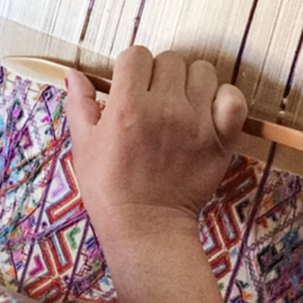
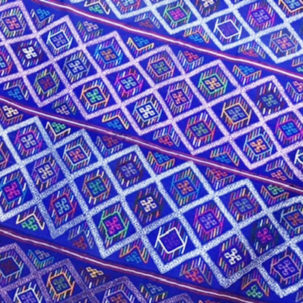
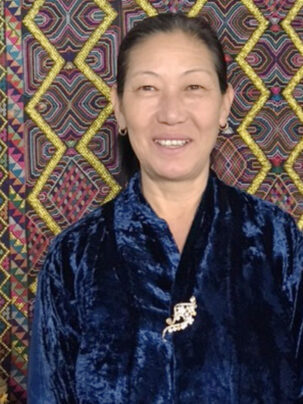
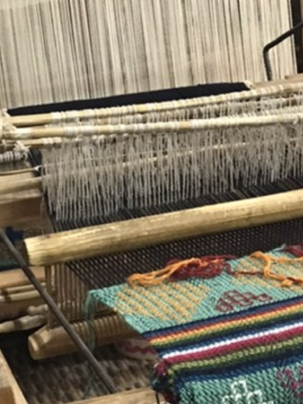
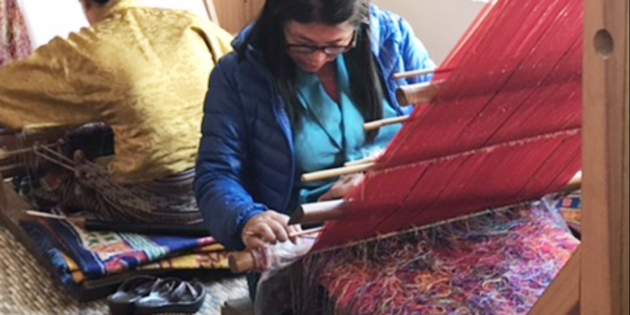
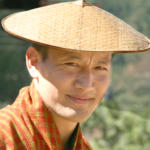
Dr. Karma Phuntsho, PhD
After, we will join with local Bhutanese in circumambulating the National Memorial Chorten, built to honor the Kingdom’s third king.
Teachings by Dr. Karma Phuntsho, Cambridge-educated Ph.D., author and former monk, on devotion, meditation, and being grounded in the world in 2024.
Day 3. Tuesday October 8th.
Morning flight from Paro to Bumthang, the spiritual heart of the Kingdom, with many sacred monasteries and temples, located in east-central Bhutan. We will visit Burning Lake (Mebar Tsho), in the Tang Valley and picnic where miracles took place. This sacred site is where treasure-finder Pema Lingpa, through divination, recovered a hidden holy artifact in the lake, using an oil lamp that stayed burning while he was submerged.
Afternoon visit to Ogyen Choling Palace, a 14th Century fortress and family heritage house, a time capsule into life and lifestyle on the trade route between Tibet and eastern Bhutan, when salt was exchanged for red rice by Yak caravan.
Day 4. Wednesday October 9th.
We will visit Chumey Valley’s Tharpaling Monastery, known as “Place of Awakening”, founded by Longchen Rabjam in the 1350’s. Longchenpa spent many years here and wrote “The Seven Treasuries”, sitting on a rock just above the monastery. These “Treasuries” form the basis for most of Nyingma Buddhist teachings revered today.
Here we will experience frescoes identifying Buddhist lineage, and also view the important caves where Guru Rinpoche (Padmasambhava), a tantric Buddhist Vajra master meditated, after he flew on the back of a Tiger, coming from India in the 8th Century, introducing Buddhism to Bhutan.
Afternoon and free time in Jakar town. Great for people-watching, shopping for prayer flags, visiting art galleries and coffee shops, and sipping Ara, the local rice distillation, and trying vegetable ‘momo’ dumplings.
Day 5. Thursday October 10th.
We will attend the dazzling and profound, Jakar Tsechu, the sacred Masked Dance Festival set in the Jakar Dzong courtyard, the regional fortress known as “The Dzong of the White Bird”, situated atop a hill in all its architectural stunning beauty, overlooking Jakar town.
Tsechu Festivals are held annually, and are a rare treat for visiting guests. The Mask dance rituals celebrate the life and animated teachings and devotional rituals of 8th Century Guru Rinpoche (Padmasambhava), who visited central and eastern Bhutan. The most sacred of the Masked dances are performed to honor deities and to appease them. The masks worn during the dances are believed to embody the spirit of the deity and to protect the performer from evil spirits. The monk dancers practice this sacred choreography throughout the year. The main temple which we will visit is where Padmasambhava left the imprint of his body on the rock after he meditated there.
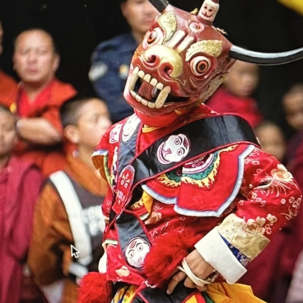
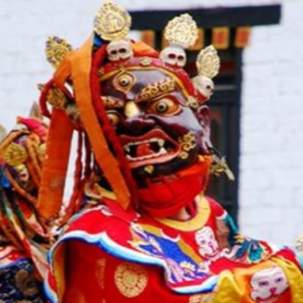
Day 6. Friday October 11th.
We will drive to Mongar, and on the way stop to walk in the vast Rhododendron Park, containing some of the 46 Rhododendron variety species found in the Kingdom. The Rhodo blooms light up the trails and adorn the healthy forests. The flowers have been used in making local beverages of wines, juices, jams, syrups, honey and teas, and are widely used in herbal medicines.
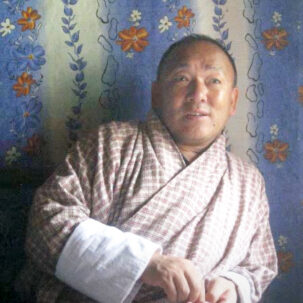
Dasho Sherab Tenzin
We will drive across the Thrumshingla Pass at 12,000 feet and briefly take in the immense beauty of the Himalayas to the north.
Late afternoon, we will reach Mongar, the ancestral district of our co-leader guide, Dasho Sherab Tenzin, who, as a child, walked across this stunning landscape on his way to boarding school. We will descend from 12,000 feet to 2,130 feet, transitioning from alpine forests to semi-tropical, orange-producing valleys.
A footnote: Sherab Tenzin grew up to become Dzongdag, governor of Mongar District, Eastern Bhutan, where he served for six years, having been appointed by the King and the Prime Minister. He then was appointed, serving as Director General for Bhutan’s Department of Employment and Skilling; and later, as Director General at the National Standards Body.
Day 7 – Saturday October 12th.
Day trip to Khoma village in Lhuntse district, center of the finest silk weaving in Bhutan. This tiny village is known for its intricately patterned silk called ‘kushuthara’. Fabric for the Queen’s garments begins here. We will interact with weavers and farmers and glimpse into their daily lives. Walks and meditations in the village. We will visit a Lemongrass distillery and an organic soap making cottage industry at Sherichu.
Day 8. Sunday October 13th.
Drive to Senakhar – a tiny rural village of approximately 100 households and co-leader Sherab Tenzin’s ancestral village. We will be hosted by the monks of Riling village. The village is on the way to Aja, another sacred pilgrimage site blessed by Guru Rinpoche. Will stay in the homes of communities around the monastery of Reling and participate in the activities of the community and experience life in rural Bhutan. Facilities here will be basic, and provide an intimate insight into village life as it has flourished for centuries.
The main activity will take place at the Reling Monastery. The temple was founded by Ratnalingpa in the 1400s. The monastery currently has 30 monks, ages 7 to 30, and provides food, shelter, and education, and is headed by Head Abbot, Khenpo Karma, who will also be teaching and leading a retreat session for our group.
Day 9. Monday October 14th.
Morning prayers and talk by Sherab Tenzin on the social, cultural, and political fabric of Bhutan: Historical context and contemporary challenges to a society committed to Buddhist values, and their profound applications of Bhutan’s GNH: Gross National Happiness. GNH features its fervent practices of Time Use and Balance, Social Well-Being, Trust and Belonging, Resilience and Self-esteem; their intimate and unusual relationship with the natural world; and the other metrics in one of the world’s youngest democracies. Bhutan continues to lead the world in being a ‘carbon negative’ country, absorbing four times as much carbon as it emits.
Afternoon: attend the sacred dances by monks along with the community. The dances are being performed for the first time at the monastery, celebrating our group’s visit, and will be instituted into an annual event.
This will be followed by a game of archery (Bhutan’s national sport) with monks and local villagers. and festivities with the community. We are invited to participate in the rhythms of village farming life and the spiritual life of villagers.
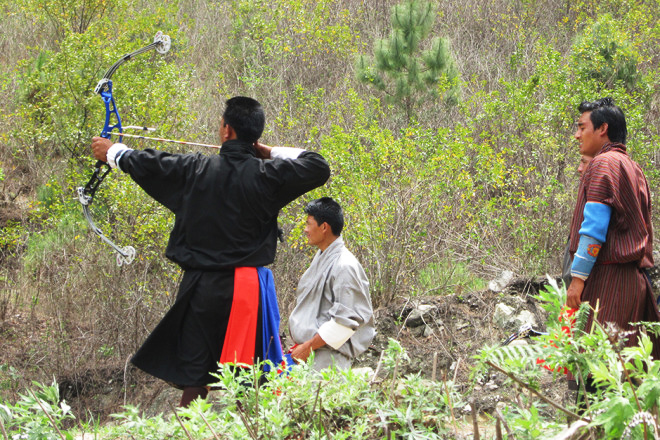
Day 10. Tuesday October 15th.
We will discover the villages of Yarab and Thramo, with a nature adventure and gentle trek. The walk passes through a deep pristine forest and will be a treat for nature lovers. Our walk will hopefully include sightings of unusual butterflies, hornbills, langurs, and monkeys. Lunch will be hosted by the house of Yarab. After lunch, we will drive to Tashingang and stay overnight at Lingkhar Lodge, inspired and built in Japanese aesthetic and Tibetan architecture. We will be hosted by a former governor of Bhutan – someone we refer to as Thomas Jefferson, as he was instrumental in researching countless constitutions from other nations, and was pivotal, in the democratic birth of Bhutan, in weaving into their constitution rights for persons with disabilities.
Day 11. Wednesday October 16th.
Drive to Mongar, en route visit Sershong lower school, nunnery at Wengkhar, and Agriculture Centre. Talks on conservation and spiritual ecology by the Director of the Agriculture Centre.
Our time in the village of Sakteng will reveal one of the rare communities untouched by the West. Here, villagers continue to dress traditionally, and lead a nomadic life.
With time permitting, we will visit the 286 square mile Sakteng Wildlife Sanctuary, protected home to the black-rumped magpie and the endangered Himalayan Red Panda. It is here in this habitat that the local Bhutanese believe the elusive and much written about Yeti-like migol, resides, a cryptid whose existence has not been scientifically confirmed.
Sightseeing in the breathtaking Kurichhu Valley and Mongar town. We will be treated to invitations into inner sanctums of sacred temples.
Day 12. Thursday October 17th.
We depart for Yonphula regional airport early, for our flight back to Paro where we will have time with Khenpo Phuntsok Tashi, who is very connected to the Monk Body, and is also the founding Director of the National Museum of Bhutan, and an accomplished author.
Additional talks by Ani Namgyel Lhamo, a passionate leader in the Bhutan Nun’s Foundation, and Khenpo Sangay Wangdi on mindfulness, engaged Buddhism, our precious human life, and accomplishing peace and contentment.
Day 13. Friday October 18th.
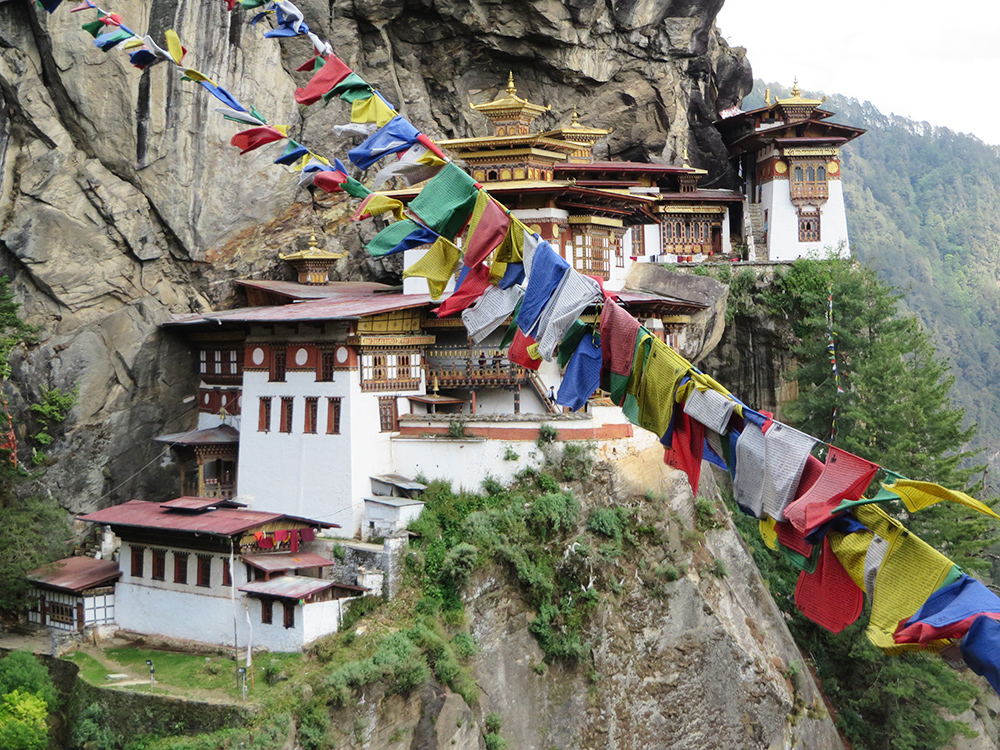
After early breakfast, we will hike Tiger’s Nest, following the pilgrimage trail, a gentle hike through Blue Pine, Oak, and Hemlock forest, crossing streams and pony trails. Option of other guided activities for those not joining the hike.
Taktshang Monastery, ‘Tiger’s Nest’, a truly blessed place and the iconic temple perched against the rock resembling the face of Guru Dorji Drolo, one of the eight manifestations of Guru Rinpoche.
On the pilgrimage trail to the top of Tiger’s Nest we will encounter multiple caves where worship and meditation has taken place since the 8th Century. In past years, we have met international visitors and heard languages from more than twenty-five countries, making this an extraordinary and once-in-a-lifetime hike-experience.
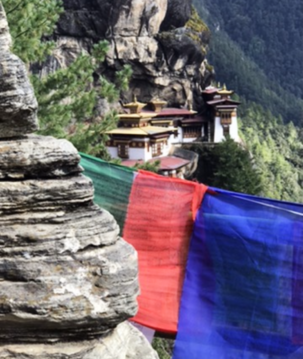

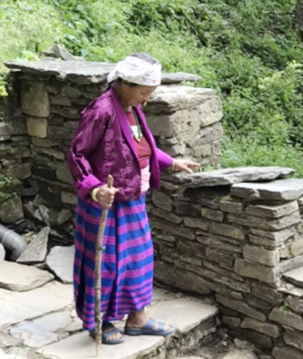
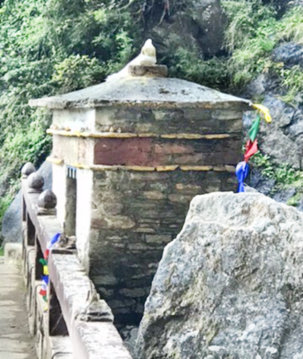
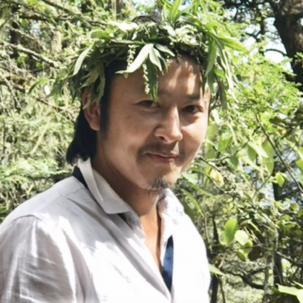
We will be passed by monks, running up the trail with bundles of firewood on their backs, and also by horses and burros carrying provisions to the restaurant at the half-way point. Those who wish, can hire horses for the journey half-way up to Tiger’s Nest- at a point where the beloved temple is within sight. It is said that once you make this pilgrimage, you are blessed for your entire lifetime.
We will experience the pilgrimage sites of many healers and meditation masters who have come here over the past 13 centuries. Again, gentle ponies are available for transport, to half-way up the trail. We will have meditation opportunities inside the inner cave temples of Tiger’s Nest.
Other sightseeing options are available for those not going up Tiger’s Nest. For anyone not wanting to hike Tiger’s Nest, there will be optional visits to sacred sites in Paro Valley available, guided by our Bhutan Wisdom Tours knowledgeable staff.
Hiking Taktsang, the iconic Tiger’s Nest with its maze of hidden temple rooms inside caves in the side of the mountain walls, where Padmasambhava (Guru Rinpoche); Yeshe Tsogyal, the 8th century “Wisdom Lake Queen” and Mother of Tibetan Buddhism thrived, is a stunning experience.
Afternoon free time in Paro town: mingling with locals, visiting galleries, journaling in cafés, people-watching, and last minute shopping for those reconsidering acquiring treasures or gifts.
With time permitting, we will stroll in Paro Valley, a verdant setting cradled in gentle mountains with red rice paddy fields, traditional farmhouses and the astonishing Bhutanese-Tibetan architecture.
Farewell dinner. Building on author Joseph Dispenza’s invitation (“The Way of The Traveler”), we each consider ways in which we are now different from the person who first stepped foot in Bhutan thirteen days before. This closing session will also provide space to consider how we will contribute and approach our families/ communities, and work, upon our return home.
Day 14. Saturday October 19th.
Last sightseeing activities and departure for Bangkok.
Our Teachers
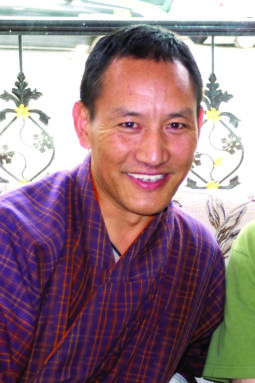
Karma Phuntsho
Dr. Karma Phuntsho is a Bhutanese Tibetan Buddhist scholar, with a Ph.D., earned from Oxford University. Karma speaks and writes eleven languages, and is the Holder of Esoteric and Definitive Doctrines with Distinction (Lopen title), completing an intense nine year program at the Ngagyur Nyingma Institute. He was also awarded Master of Perfection from the Nyingma Institute, after a six year program in Buddhist and Tibetan Studies.
In 2000-2001 Karma was a Fellow, Department of Sanskrit and Indian Studies, Harvard University. Karma Khuntsho has written or collaborated in over 70 books, monographs, and publications on “The Perfection of Wisdom”, “Social Stratification and Kinship in Bhutan”, “Buddhism and the Gross National Happiness (GNH) in Bhutan”, “Buddhism as an Act of Happiness”, “Bhutan’s Spiritual Ecology”, “Mind or/ and Brain: Response to Brain Scientists”. Dr. Phuntsho has deep interests in investigating and researching Himalayan cultures and preserving Bhutan’s oral heritage.
With a big heart and approachable humor, Karma, an investigator for the University of Cambridge project on Tibetan-Mongolian Rare Books and Manuscripts, he is currently Editor of the Journal of Oxford Centre for Buddhist Studies, and delights in presenting workshops in the U.S., Europe, and Asia.
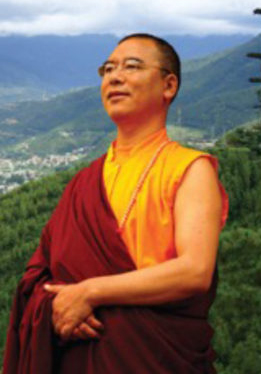
Khenpo Phuntsho Tashi
Khenpo Tashi has presented to our groups for years, and is a bridge between the contemplative community and the dynamic changing Buddhist culture and society. He is the author of numerous profound books, including Invoking Happiness, Three Rising Stars: Amazing life stories of the Enlightened Masters of Bhutan, Mindful Living in Bhutan, The Fine Art of Living and Manifesting A Peaceful Death: Primordial Wisdom, and Journey to Liberation: A Life Story of the Buddha According to the Mahayana Tradition.
Khenpo Tashi has traveled throughout the world giving retreats and workshops. He is very approachable, easy to understand, and a delight. Khenpo participated in the Smithsonian’s 42nd Folklife Exhibition, featuring Bhutan’s culture and art. We are very blessed to have his participation, compassion, wisdom, and friendship.
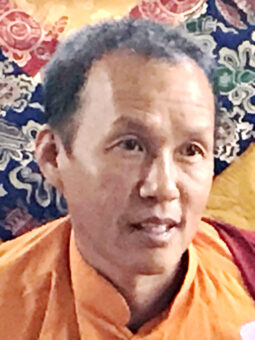
Khenpo Sangay Wangdi
Khenpo Sangay is a very perceptive and approachable practitioner, and also highly realized contemplative, eager to share his wisdom, grounded in practical, engaged Buddhism. Khenpo talks on Two Truths, our precious human life, and accomplishing peace and happiness. ‘Khenpo’ is the highest academic title, given in Bhutan, and Kenpo Sangay has taught in Nepal, India, Bhutan, and the United States.
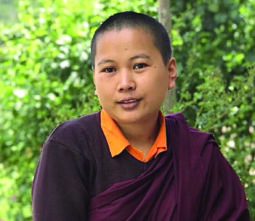 Ani Namgyel Lhamo
Ani Namgyel Lhamo
Acharya Ani Namgyel Lhamo, a progressive nun versed in Buddhist scriptures with a Master’s Degree in Buddhist Philosophy, and a leading light in the Bhutan Nun’s Foundation’s initiative in promoting nun’s education and welfare.
A fresh and passionate voice, Ani aims to “empower and educate Bhutanese girls and women, and to improve living conditions and economic vitality of rural villages, in turn helping to preserve the country’s rich Buddhist culture in the face of rapid economic development.”
The Bhutan Nuns Foundation wants nuns to be socially engaged participants in society, with opportunities to maximize their personal potentials. In our eight years of being in Bhutan, Ani Namgyel offers us an awakened window into the contemplative society of Bhutan, and especially women’s challenges and opportunities.
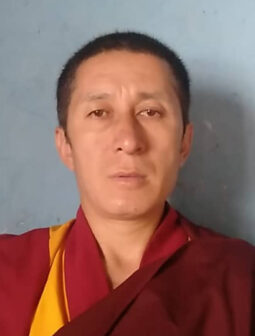
Khenpo Karma
As a young Bhutanese monk, Khenpo Karma completed his studies at Namdroling Monastery in Mysore, India, and returned to Bhutan in 2015. Khenpo became abbot in his Eastern Bhutan village of Rilling, and has been responsible for the teachings, spiritual needs, and care of some 30 monks aged between 6 and 21.
Today Khenpo Karma has been entrusted with caring for another monastery in the sacred valley of Aja, where he is currently setting up a meditation center. People travel to remote Eastern Bhutan to receive his blessings and to absorb his secular wisdom, applying it to our precious lives, mastering the dance of living contentedly and in service to the world.
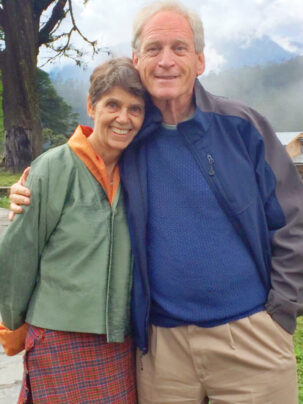 As we started the retreat with a puja and opening ceremonies, we prepare to close the retreat with rich ritual ceremonies, bringing in the monk and nun community. Participants will be led in an evocative process reflecting on how we have changed during these two weeks.
As we started the retreat with a puja and opening ceremonies, we prepare to close the retreat with rich ritual ceremonies, bringing in the monk and nun community. Participants will be led in an evocative process reflecting on how we have changed during these two weeks.
Leaving Bhutan begins a new transition. An opportunity opens for integrating our experiences, welcoming ideas and insights, choosing activities that reflect what we have learned.
Consider joining us in this life-changing, rare Bhutan experience!
— Charles and Marla
Additional Notes:
Our five teachers will be complimented by a sixth teacher: Bhutan itself, with many lessons for all of us, especially insights into spiritual ecology and also gross national happiness.
Throughout our unfolding journey, we will be led in meditations and exercises, contributing to the sacredness of our pilgrimage. Bhutan, situated between India and Tibet, is a pristine place for retreat and renewal.
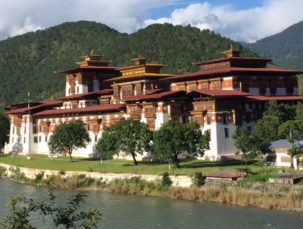
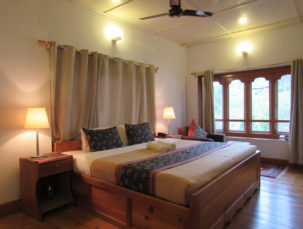
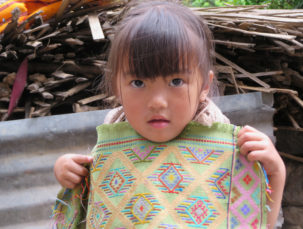
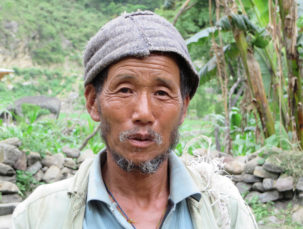
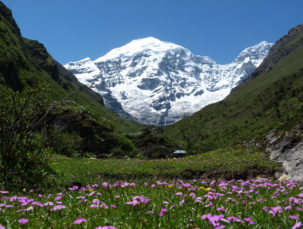
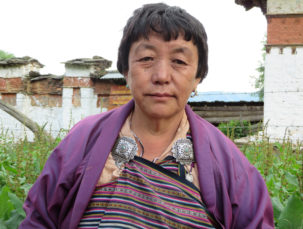
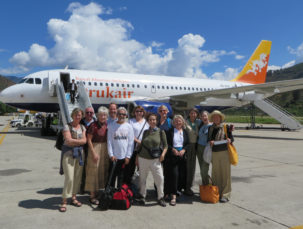
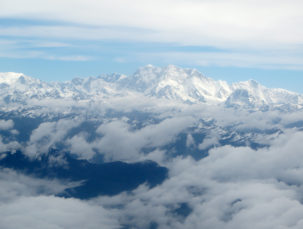
We encourage you to read the November 2, 2014 New York Times Style Magazine-Travel Section on Bhutan, a marvelous 9-page article by by Jody Rosen, “The Higher State of Being.”
Kind regards, and looking forward to hearing from you with Gratitude,
Charles Simmons and Marla Perry-Simmons.
Email: charles@nulltwoTruths.org